| |
 |
November 2016 |
 |
|
| |
| |
|
Welcome
Welcome to the November issue of the USAPEEC ASEAN Regional Office’s newsletter.
This newsletter seeks to provide readers with useful product and major market information for institutional and consumer users of U.S. poultry. Readers will find in every issue a variety of general market information, program activities as well as useful product information.
This issue, we share several activities that took place in Southeast Asia.
Contents:
- The Camfood 2016 Show
- Cambodian Consumers have Hearty Appetites for Imported Foods
- Expanded Trade Expected from Burma
- Michelin-Starred Hawker Stall in Singapore Plans Expansion
- Competitive Eating on the Rise in Southeast Asia
- Fighting Waste
- Health Benefits in Popular Chicken Dishes in Asia
- How Slowing Economy Impacts F&B Restaurants in Singapore
|
|
|
| |
|
|
|
| |
|
Additional Market Information Available
We have updated our website to include more information on market reports and export documentation guidelines.
You can visit our ASEAN website at: www.usapeecasean.com |
|
|
| |
|
|
|
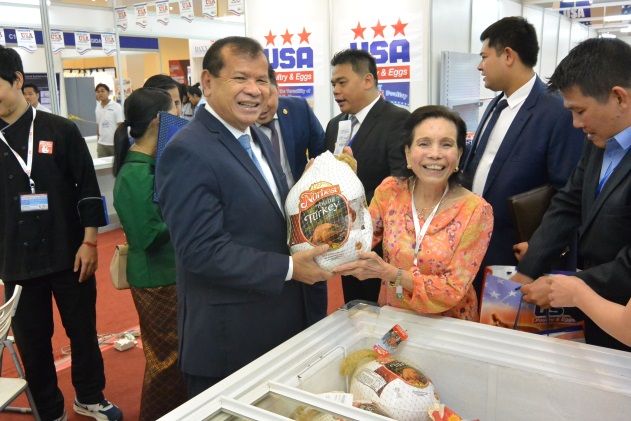 |
|
The Camfood 2016 Show The Camfood 2016 Show, that took place between October 20 and October 22, is Cambodia’s premier food show. It continues to be a major attraction for the local food trade. Over 176 regional and international exhibitors participated and represented several international brands, including those from the United States, Australia, European Union, Hungary, New Zealand, South Korea, Switzerland, Taiwan, Thailand, Turkey, Singapore, and Cambodia. The products displayed during the food show were fresh fruit and vegetables, meat and poultry, confectionery, snacks, alcoholic and non- alcoholic beverages, and sauces.
USAPEEC won the Best Information Booth Award in the Camfood 2016 Show. The U.S. Poultry Pavilion, organized and managed by USA Poultry & Egg Export Council Singapore, prepared various Asian and Western dishes daily for sample testing during the food show.
As anticipated, the USAPEEC Pavilion attracted large crowds daily and received a significant number of trade enquiries and new contacts.
In addition, USAPEEC was the platinum sponsor for the poultry cooking competition in the Cambodia National Culinary Competition.
|
|
Cambodian Minister for Tourism Dr. Thong Khon visits USAPEEC Pavilion during Camfood 2016 Show |
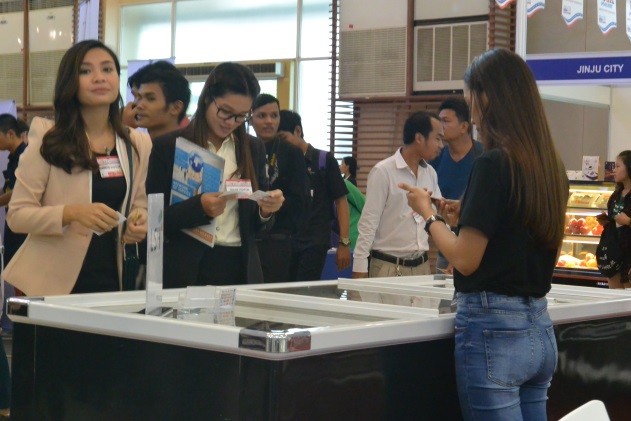 |
Section of the trade visitors at the USAPEEC Pavilion in CamFood 2016 Show |
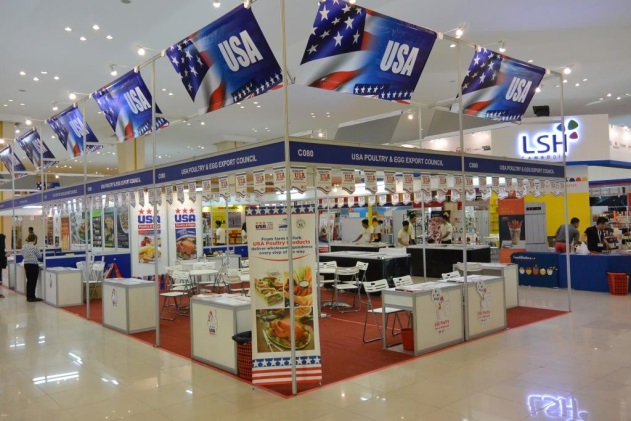 |
USAPEEC Pavilion at CamFood 2016 Show |
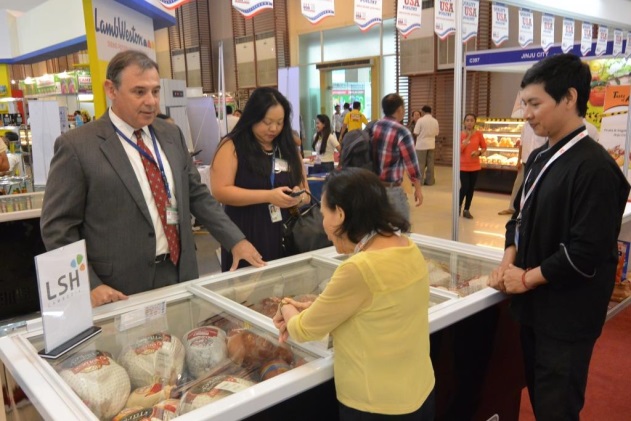 |
U.S. Ambassador William A. Heidt, Margaret Hsiang, Deputy Political & Economic Section Chief, and U.S. Embassy Phnom Penh chat with Margaret Say, USAPEEC |
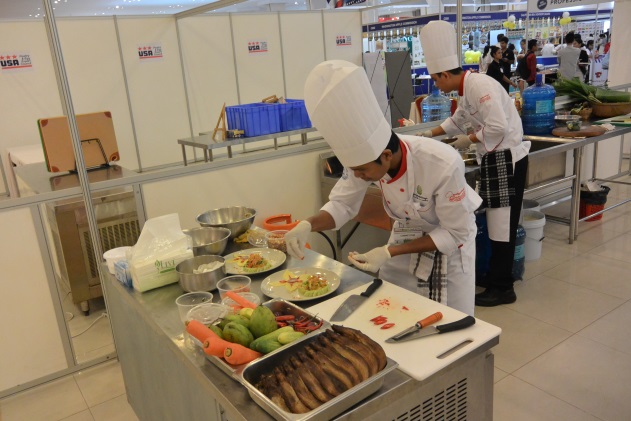 |
One of the contestants in the Cambodian National Culinary Team Challenge |
| |
|
|
|
|
|
Cambodian Consumers have Hearty Appetites for Imported Foods
The rapid economic growth averaging eight per cent per annum over the last decade has contributed to the increased demand for imported food products.
According to a market report prepared by USDA office based in Ho Chi Minh City, U.S. agricultural exports to Cambodia increased by 350 per cent, from US$6.6 million in 2009 to US$27.8 million in 2014. Consumer food products that are most in demand include fresh fruit, beef, prepared foods, and dairy products. A considerable amount of U.S. food products is not imported directly, but through third countries such as Singapore and Thailand.
The same report highlighted that most consumer food products are still distributed through traditional retail markets, which are operated by small family businesses. However, increasing consumer incomes, rising tourist arrivals and sizeable expatriate residents (NGOs and private businesses) have collectively contributed to the growth of modern supermarkets, shopping malls, convenience stores, and Western concept restaurants.
The USDA report revealed that the U.S. food products with the best market prospects were pork, beef, processed meat products, dairy products, frozen fires, snacks, fresh fruit and dried fruit, and nuts. Products which are shelf-stable and do not require refrigeration enjoy wider distribution, as most of the small retail stores do not have refrigeration facilities.
For more market information on Cambodia, please click link below
Cambodia Exporter Guide_Ho Chi Minh City_Cambodia_10-20-2015 |
|
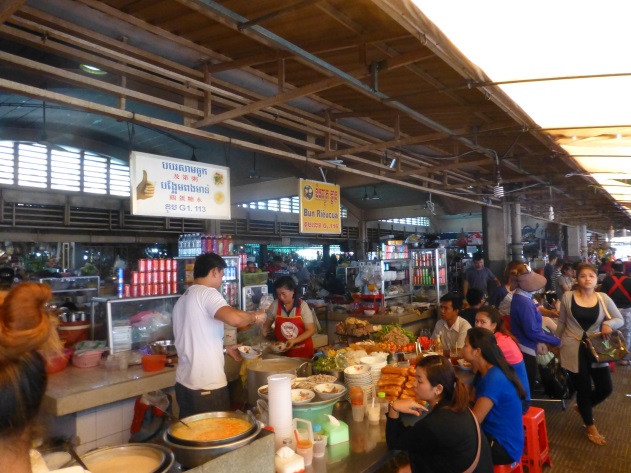 |
Small retail stall in Phnom Penh |
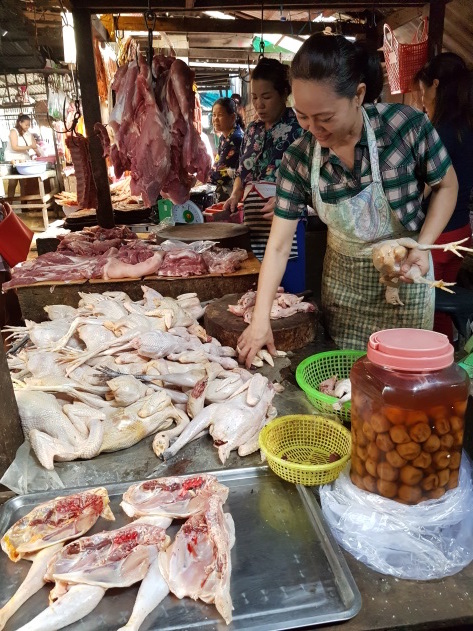 |
Raw chicken & chicken parts sold in outdoor market stalls |
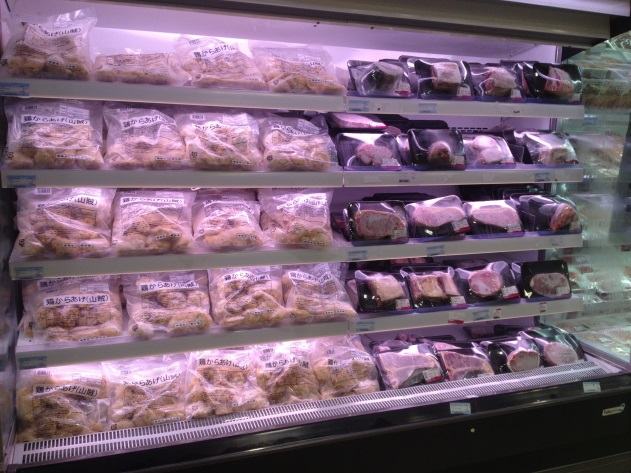 |
Chicken parts displayed in a local supermarket |
| |
|
|
|
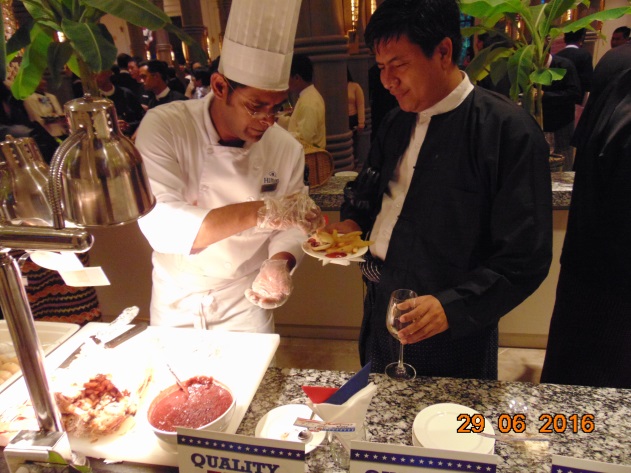 |
|
Expanded Trade Expected from Burma
The USTR, through an October press release, announced that President Obama has signed a proclamation, reinstating the Generalized System of Preferences (GSP) Benefits for Burma. It is intended to take effect from November 13, 2016. The GSP program, created by the Trade Act of 1974, granted the GSP beneficiary countries duty-free entry of 3,500 products into the United States. An additional 1,500 products exported by the least developed beneficiary countries are allowed duty-free entry into the United States. Burma’s GSP privileges were suspended in 1989, due to workers’ rights concerns.
Burma’s exports to the United States have increased from US$38,000 in 2012 to US$142 million in 2015. Exports from Burma include dried peas, rattan products, wood products, and travel goods. Both U.S. and Burmese companies are expected to benefit significantly from the reinstatement of the duty-free privileges. As Burma is grouped together with other ASEAN countries such as Cambodia, Indonesia, the Philippines, and Thailand as a single GSP eligible beneficiary developing country, materials, components and production from any of the above designated ASEAN countries may be used to qualify the completed product as GSP eligible. |
|
Burmese guest sampling U.S. food products at an U.S. Embassy reception held in Naypyidaw, Burma in July 2016 |
| |
| |
|
|
|
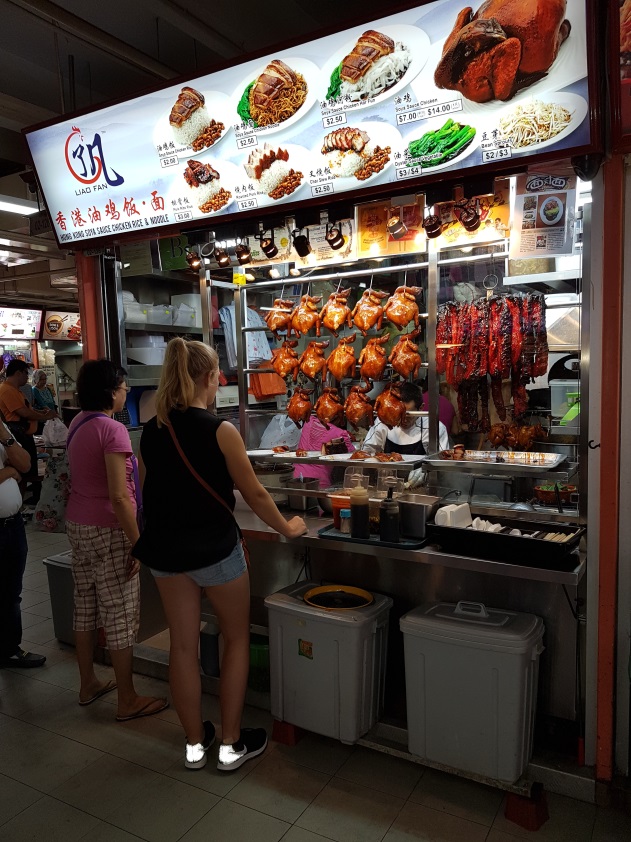 |
|
Michelin-Starred Hawker Stall in Singapore Plans Expansion
It has been history in the making for Singapore hawker food stalls. For the very first time, two hawker stalls, Liao Fan Hong Kong Sauce Chicken Rice and Noodle stall and Hill Street Tai Hwa Pork Noodle stalls have been awarded one Michelin star each. Since receiving the Michelin star award, Liao Fan chicken rice and noodle stall has had daily long queues of customers, which sometimes take up to 3 hours to be served.
Chef and owner of Liao Fan stall, Mr. Chan Hon Meng, recently announced expansion plans with Hersing Culinary, a Singapore company who owns the Singapore franchising rights to two other Michelin-starred restaurants, the Hong Kong Tim Ho Wan restaurant and the Japanese noodle restaurant, Tsuta. Singapore media reported that under the new joint venture, Chef Chan will manage and operate a new restaurant costing S$1milliion (US$720,000), with an area of 2.000 square feet to accommodate the seating capacity of 80 diners.
Chef Chan will continue to operate his original hawker stall at Chinatown Complex, but will provide personal supervision over the new restaurant. In order to keep the food quality consistent, the sauces will be premixed in a central kitchen, but all meals will be prepared on site. The new partners hope to achieve revenues of at least S$50million (US$35.97million) in the next few years. |
|
Michelin-starred Singapore hawker stall
|
| |
|
|
|
| |
|
Competitive Eating on the Rise in Southeast Asia
A quick online search about competitive eating and food challenges turns up numerous entries about the latest happenings in the realm of competitive eating internationally. Though not a new concept, the phenomenon of competitive eating has captured the public’s imagination in recent years, and is finding its way into the hearts and bellies here in Southeast Asia.
Most food challenges involve contestants competing on the amount of food consumed, the speed at which they consume it, and/or the level of spiciness tolerated. Food challenges have sprung up in restaurants and food festivals, and have even become full-fledged events in their own right. These festivals and events often attract strong attendance and media attention1.
Fuelled by social media, the engaging nature of competitive eating has enabled competitive eaters and food challenges to gain substantial following on platforms such as YouTube and Instagram. Competitive eating organisations have also emerged to host and regulate food challenges and manage competitive eaters to participate in relevant challenges. These factors have all come together to make food challenges and events a viable form of marketing for restaurants, food manufacturers, and even shopping malls2.
Here is a list of recent food challenges across Southeast Asia that have received healthy amounts of publicity, and sustained interest on social media.
Singapore
-
Xiang Ji Mega Chicken Rice Challenge (on-going) – Challengers who finish 10 portions of rice and 1 whole chicken in 40 mins enjoy the $28 meal for free. Successful challengers also receive a $50 voucher. Singapore competitive eater Zermatt Neo took on the challenge to set the record time at under 30 minutes, generating social media buzz around the event and eatery3.
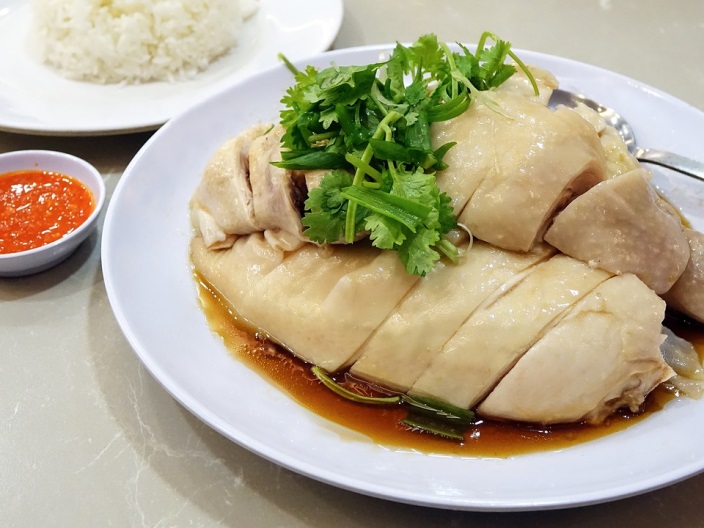
Chicken Rice Meal
-
JCube Seoul Spicy Noodle Challenge (2015) – Contestants had to consume three bowls of Korean instant noodles, each of a different flavour with its own level of spiciness – original, wasabi, and a mixture of chilli powder and chilli padi. To complete the challenge, they also had to finish a 500ml bottle of Coke after finishing all three bowls of noodles. The winner won a pair of tickets to Seoul, and entered the Singapore Book of Records for clocking the fastest time in spicy eating. The event attracted over 250 contestants and generated media coverage in a local newspaper5.
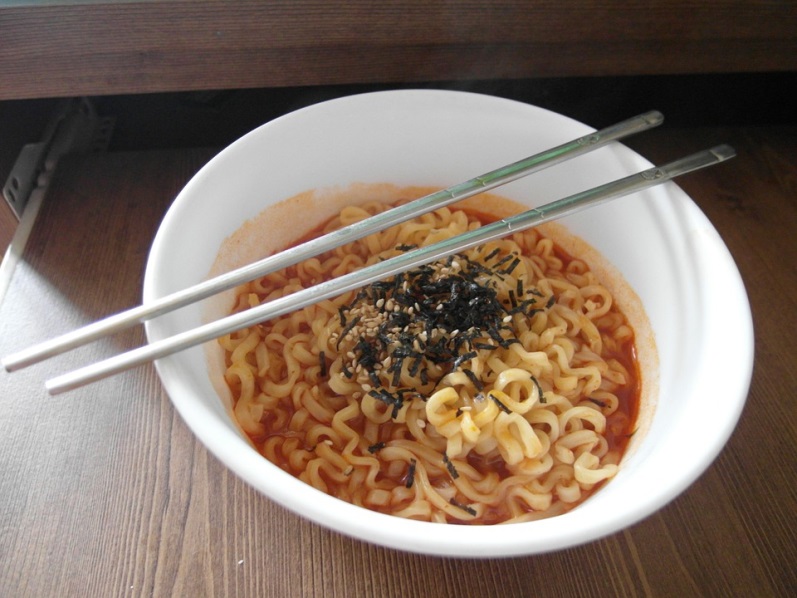
Spicy Korean Instant Noodles
Malaysia
-
The Chilli Rush Challenge (on-going) – Contenders have 4 minutes to finish 12 spicy chicken wings brushed with bhut jolokia chilli sauce, a species of pepper that is 10 times spicier than the familiar chilli padi. Winners receive a T-shirt and a membership card to the restaurant6.
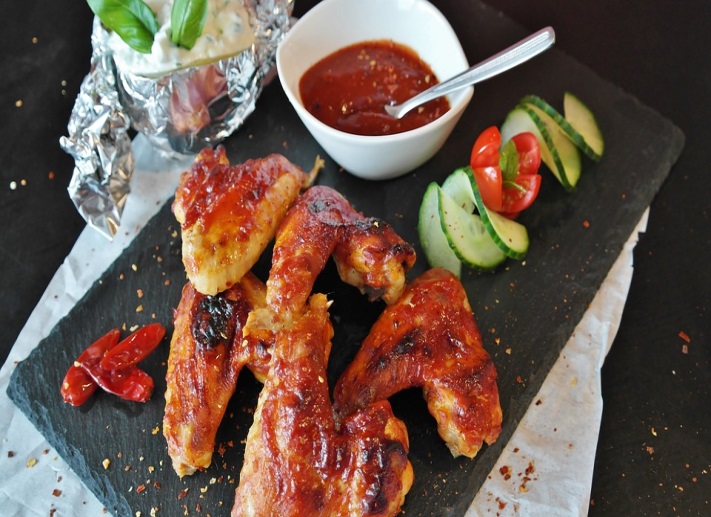
Spicy Chicken Wings
-
Mikey’s 9-1-1 Pizza Challenge (on-going) – To beat the challenge, contestants must finish a 1.6kg pizza sprinkled with Thai chilli, cayenne pepper, chopped habanero, and covered with ghost pepper powder in under 40 minutes. The pizza costs RM88.88, but successful challengers receive a cash prize of RM5007.
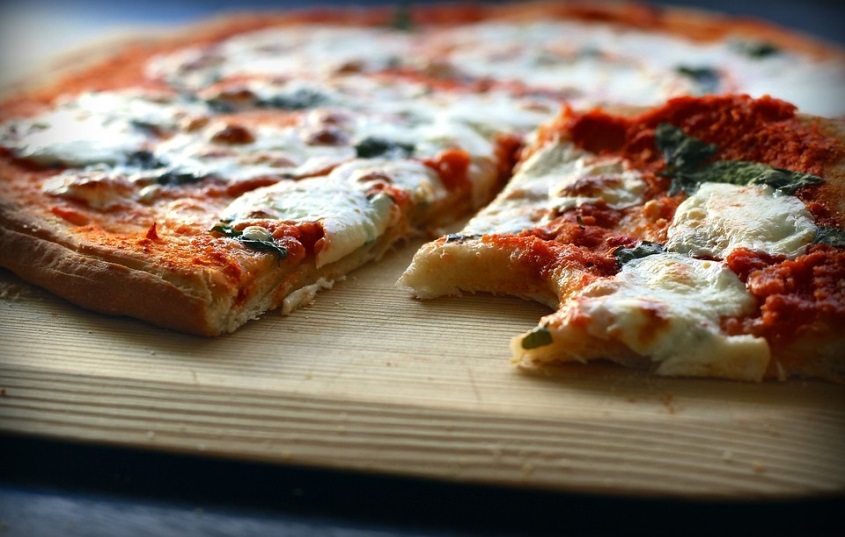
Pizza with Hot Peppers
Thailand
-
Gold Curry’s 10kg Curry Rice Challenge (on-going) – Contestants have one hour to finish the 10kg pork cutlet, sliced cabbage, curry, and rice meal7. Successful challengers receive the THB2,899 meal for free and win THB40,000 in cash8.
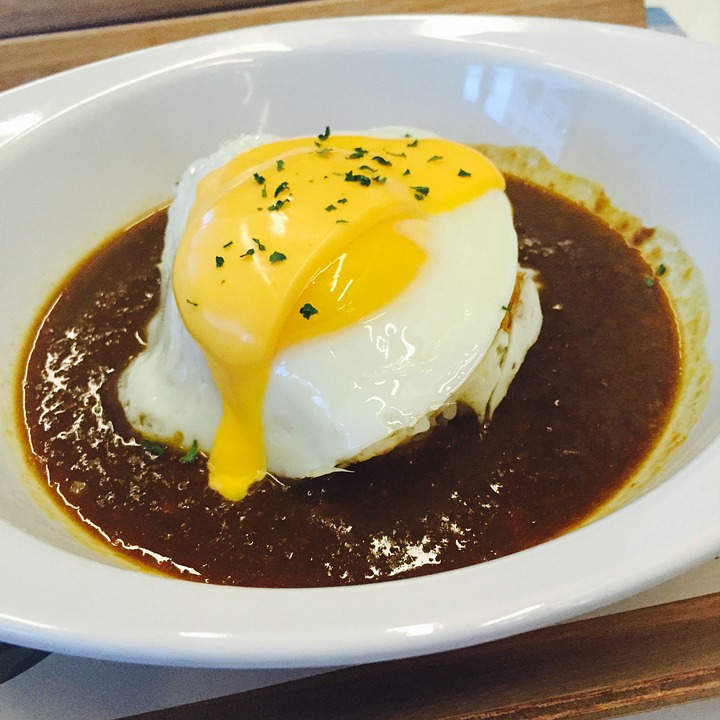
Curry Rice
Regional – Australia, Hong Kong, Singapore, Thailand
-
CP Biggest Eater Competition (2011-2012) – The four competitive eating champions across these territories had to go through local heats and finals to compete at the regional finale. Contestants had to consume as many CP shrimp wontons in 8 minutes to win the USD3,000 cash prize. The regional event drew strong participation and enjoyed significant media coverage9.
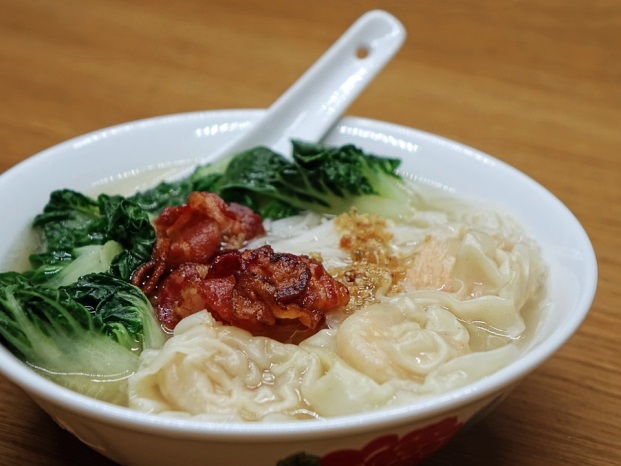
Shrimp Wonton Soup
References:
1The Straits Times (2016). Competitive eating gaining following with more events and challengers [online] Available at: http://www.straitstimes.com/lifestyle/food/chomping-to-win
2The Straits Times (2016). Competitive eating gaining following with more events and challengers [online] Available at: http://www.straitstimes.com/lifestyle/food/chomping-to-win
3The Straits Times (2016). Singaporean devours 4kg of chicken rice in under 30 minutes for eating competition [online] Available at: http://www.straitstimes.com/singapore/singaporean-devours-4kg-of-chicken-rice-in-under-30-minutes-for-eating-competition
4The Straits Times (2016). Competitive eating gaining following with more events and challengers [online] Available at: http://www.straitstimes.com/lifestyle/food/chomping-to-win
5The Straits Times (2016). Singaporean devours 4kg of chicken rice in under 30 minutes for eating competition [online] Available at: http://www.straitstimes.com/singapore/singaporean-devours-4kg-of-chicken-rice-in-under-30-minutes-for-eating-competition
6The New Paper (2015). Photographer is ‘Singapore’s Spiciest Eater’ [online] Available at: http://www.tnp.sg/news/singapore-news/photographer-singapores-spiciest-eater
7MalaysiaTatler.com (2016). 5 food challenges to start your 2016 with a kick in KL and PJ [online] Available at: http://my.dining.asiatatler.com/tatler5s/5-food-challenges-kualalumpur-petalingjaya-2016#slide-2
8Gold Curry Bangkok Facebook Page (2016). Eating Japanese curry at Gold Curry Bangkok [online] Available at: https://www.facebook.com/GoldCurryBangkok/photos/a.3184430716
33472.1073741825.103434569800991/800246603453114/
?type=3&theater
9CP Brand Website (2012). CP Biggest Eater Competition 2011-2012 – Asia Pacific’s first and largest regional eating competition smashes eating records [online] Available at: http://www.cpbrand.com/uploads/files/CPBE2011-2012-media-release.pdf
|
|
| |
| |
|
|
|
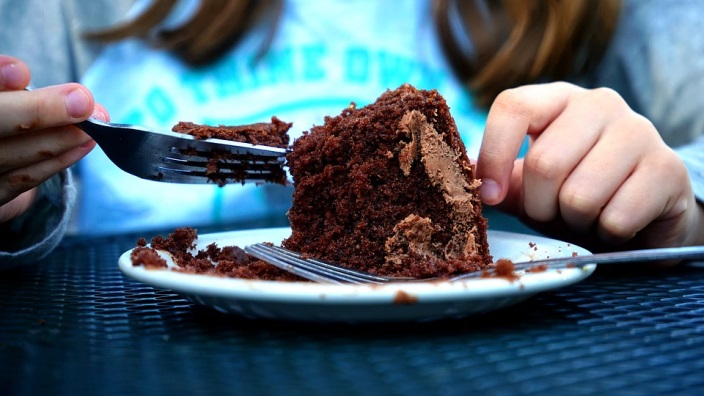 |
|
Fighting Waste
“Do not leave food or rice on your plate. Otherwise, every remaining piece of it will be moles or pockmarks on your future spouse’s face” - a traditional Chinese superstition passed down for generations. This tactic has helped to cultivate the habit of not wasting food from young. However, this folklore does not seem to work anymore. As Singapore’s population grows, so has the amount of food wastage. People underestimate the consequence of not finishing their meals.
785, 500 tons of food disposal were reported in 2015. This equates to two bowls of food per day. Unfortunately, only 13% of the amount is recycled. Compared to 2009, there was a significant difference of 183,900 tons. The escalation in negligence of food management threatens the capacity of Singapore’s only remaining landfill – Semakau Landfill [1][2].
To counter the ever-growing obstacle, a campaign was launched by the National Environment Agency (NEA) in 2015. Traditional and digital media platforms showcased posters and educational videos to educate both public and households about food wastage. Besides satisfying hunger, individuals need to consider the aftermath of having excess food. To encourage food recycling habits, an online guide has been provided, as well as recipes and suggestions, on reusing leftover food for future meals.
The campaign included the collaboration with supermarkets such as Cold Storage, to display posters and table-top stickers at their stores. It aims to remind consumers to reduce food wastage. Taking things further, on-site food waste recycling systems were also implemented at two hawker centres3 – Ang Mo Kio Block 628 Market and Tiong Bahru Market. Up to 80% of the total waste can be reduced through this system if the trial is successful.
Similarly, Amara Hotel and a shopping mall at Tanjong Pagar have also implemented a centralized food waste recycling system4. This initiative resulted in more than 50% of Amara Hotel’s waste being recycled, saving the organization more than SG$50,000 annually after returns of investment.
Food spoilage and throwing away leftovers are some examples of food waste. Apart from consumers and households, supermarkets and businesses are also guilty. From farms to wet markets and supermarkets, cosmetic filtering is inevitable5. People want the best and anything below a certain perceived “standard” is discarded. Bruised fruits and vegetables are usually considered as not merchantable and subsequently dumped. Based on the Electrolux Ugly Food Survey (2016), 83% of Singaporeans disclosed that they would only purchase fruits and vegetables that looked fresh. Further insights from the study revealed that one in four individuals would never consume bruised fruits and vegetables.
In the food and beverage industry, employees who lack training tend to mishandle food. It is a recurring phenomenon that occurs everywhere, especially in buffet restaurants. Offering an ‘all-you-can-eat’ concept, chefs must prepare more to cater to customers. On average, 20% of cooked food is generally wasted daily, as it is considered an embarrassment to pack leftovers home.
According to a survey done by National Environment Agency, people tend to purchase more than what they consume. Out of ten respondents, eight mentioned that they would scale back in spending on food to save money. Six in ten commented that gaining knowledge on meal planning and food inventory management will lessen the need to throw food unnecessarily.
Habits of individuals in society play a crucial role. As mentioned by Minister for Environment and Water Resources, Masagos Zulkifli, Singaporeans need to implement the 3Rs – Reduce, Reuse and Recycle, on food waste. Mr. Ronnie Tay, Chief Executive Officer of National Environment Agency, also highlighted that their efforts are only a means to an end, where the end is when people quit wasting food.
Cultivating such a habit is beneficial in the long run. Acknowledging the possibility of an upsurge in food imports, individuals will be spending more if they are not capable of saving and recycling food. Controlling food wastage also has a certain impact on Singapore’s economy and food security6. Besides showing that Singapore uses resources efficiently, it helps to keep the demand and price of food in check.
If individuals manage their food inventory properly, it is possible that the nation’s spending on food import, Semakau Landfill or even the facial complexion of our future spouses may be salvaged.
References:
1Boh, S. (2015). NEA to launch campaign to reduce food waste next week. [online] The Straits Times. Available at: http://www.straitstimes.com/singapore/nea-to-launch-campaign-to-reduce-food-waste-next-week
2Othman, L. (2016). Singapore needs to rethink food wastage: Masagos. [online] Channel NewsAsia. Available at: http://www.channelnewsasia.com/news/singapore/singapore-needs-to/2413008.html
3Nea.gov.sg. (2016). Two Hawker Centres To Trial On-Site Food Waste Recycling Systems. [online] Available at: http://www.nea.gov.sg/corporate-functions/newsroom/advisories/two-hawker-centres-to-trial-on-site-food-waste-recycling-systems
4Siong, O. (2016). Organisations look to reduce food waste with centralised recycling system. [online] Channel NewsAsia. Available at: http://www.channelnewsasia.com/news/singapore/organisations-look-to/2434432.html
5Savefoodcutwaste.com. (2016). Food Wastage in Singapore | Save Food Cut Waste. [online] Available at: http://www.savefoodcutwaste.com/food-waste/food-wastage-in-singapore/
6Muruganathan, K. (2016). Recycling food waste means less money down the drain. [online] MyPaper Online. Available at: http://mypaper.sg/opinion/recycling-food-waste-means-less-money-down-drain-20160215 |
|
|
| |
|
|
|
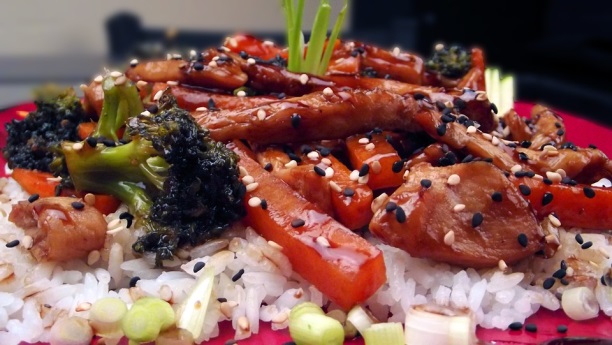 |
|
Health Benefits in Popular Chicken Dishes in Asia
Chicken is one of the commonly consumed poultry items in the world1 and widely known for its high protein content. Several health benefits2 from consuming chicken include reducing risk of cancer, lowering cholesterol, boosting immune system, building muscles, and promoting heart health3. Loaded with vitamins and minerals, the following list shares some popular chicken dishes that Asians love.
Chicken Teriyaki
This sauce initially originated from Japan as a combination of spices and soy sauce4. The American-Japanese community got creative and added a few other ingredients such as pineapple and brown sugar to this glaze.
The teriyaki sauce enhances flavors when mixed with low-fat proteins, such as chicken5. It is a great low-calorie option when it comes to marinating chicken. A tablespoon of this yummy marinade is equivalent to a mere 16 calories while a tablespoon of barbeque sauce is almost twice the amount of calories6. Chicken teriyaki is best paired with other nutrient-dense food, such as whole grains7.
Chicken Tikka Masala
Even though Chicken Tikka Masala is an Indian dish, this dish earned the title for being a “British National Dish” by their Foreign Secretary Robin Cook in 20018. To date, the history of this dish remains vague9.
This savory Indian dish is tomato-based and packed with traditional Indian spices. This dish is protein-rich and contains fibre10. Fiber can work as a cholesterol-reducing nutrient in a diet, preventing spikes in sugar levels. One can increase the fiber content in this dish by simply adding more tomatoes and servings of brown rice to increase the fiber content in this dish.
Chicken Dumpling Soup
A bowl of piping hot Chicken Dumpling Soup is comfort food for many11. Steamed chicken dumplings are typically preferred over fried ones, as they are lower in fat content. A single serving of Chicken Dumpling Soup is loaded with plenty of vitamins and minerals12. White chicken meat is used as it is lower in cholesterol and saturated fat than dark meat13. Vegetables are usually added into the soup as well. This dish is best consumed hot on its own, or paired with a bowl of whole grain noodles.
References:
1Food and Agriculture Organization (2016). Sources of Meat. [online] Available at: http://www.fao.org/ag/againfo/themes/en/meat/backgr_sources.html
2Organic Facts (2016). Health Benefits of Chicken. [online] Available at: https://www.organicfacts.net/health-benefits/animal-product/health-benefits-of-chicken.html
3The Health Site (2015). 7 Reasons Chicken is Good For You. [online] Available at: http://www.thehealthsite.com/fitness/health-benefits-of-chicken-sa214/
4Live Strong (2014). Nutritional Facts of Teriyaki Sauce. [online] Available at: http://www.livestrong.com/article/290726-nutritional-facts-of-teriyaki-sauce/
5Live Strong (2014). Nutritional Facts of Teriyaki Sauce. [online] Available at: http://www.livestrong.com/article/290726-nutritional-facts-of-teriyaki-sauce/
6Live Strong (2014). Nutritional Facts of Teriyaki Sauce. [online] Available at: http://www.livestrong.com/article/290726-nutritional-facts-of-teriyaki-sauce/
7Health Eating (2016). Nutrition Guide for Marinated Teriyaki Chicken. [online] Available at: http://healthyeating.sfgate.com/nutrition-guide-marinated-teriyaki-chicken-1711.html
8EastzEast (2016). The History of Your Favorite Curry – Tikka Masala. [online] Available at: http://eastzeast.com/the-history-of-your-favourite-curry-tikka-masala/
9EastzEast (2016). The History of Your Favorite Curry – Tikka Masala. [online] Available at: http://eastzeast.com/the-history-of-your-favourite-curry-tikka-masala/
10Live Strong (2014). Chicken Tikka Masala Nutrition Information. [online] Available at: http://www.livestrong.com/article/375627-chicken-tikka-masala-nutrition-information/
11The Huffington Post Australia (2015). Dumplings: Are They Healthy or Not? [online] Available at: http://www.huffingtonpost.com.au/2016/02/18/dumplings-are-they-healthy-or-not/
12Health Eating (2016). How Much Protein in Chicken and Dumplings. [online] Available at: http://healthyeating.sfgate.com/much-protein-chicken-dumplings-9279.html
13Health Eating (2016). How Much Protein in Chicken and Dumplings. [online] Available at: http://healthyeating.sfgate.com/much-protein-chicken-dumplings-9279.html |
|
Chicken Teriyaki Dish |
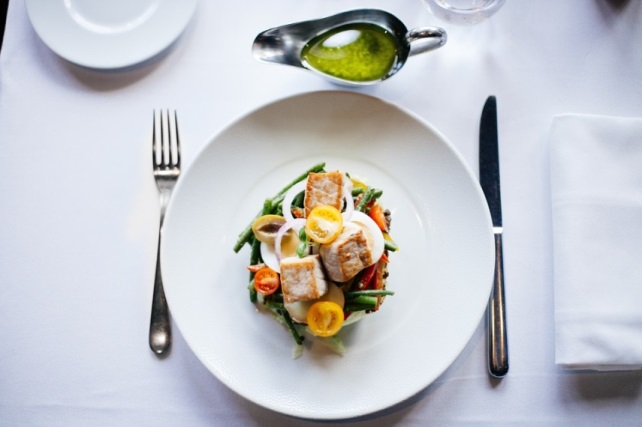 |
|
How Slowing Economy Impacts F&B Restaurants in Singapore
According to industry analysts at Euromonitor International, the food and beverage (F&B) industry in Asia Pacific is estimated to accumulate total revenue of US$3.23 trillion in 2016. Despite the slowing economy, China, Japan and Indonesia are recognized as leading F&B producers in Asia Pacific.
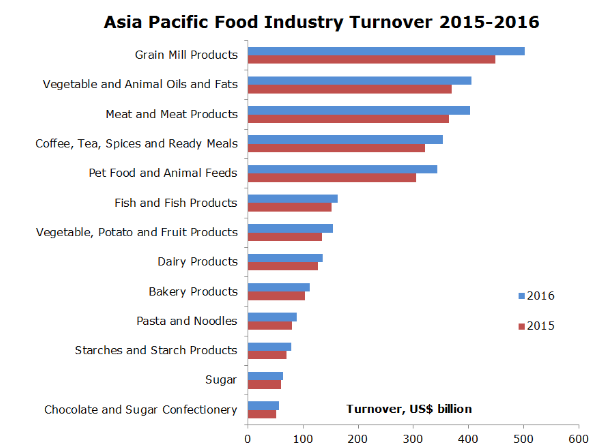
Source: Asia Pacific Food Industry
From the above chart, the top three categories - grain mill products, oils and fats, meat and meat products - account for at least half of Asia Pacific’s US$4.86 trillion food industry revenue in 2016. These are labeled as Asia’s leading food drivers.
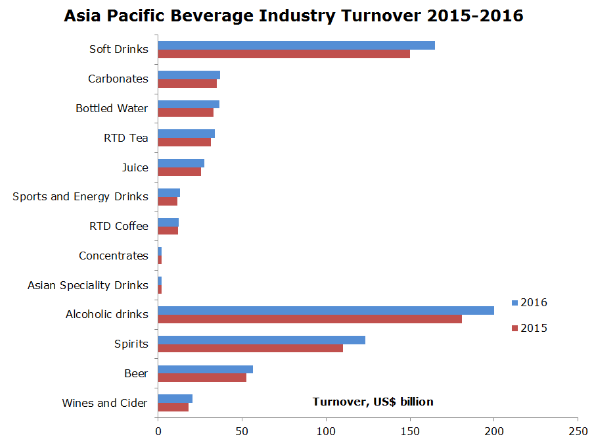
Source: Asia Pacific Food Industry
Asia Pacific beverage industry’s revenue will make up 11% of the combined F&B industry in 2016, after hitting US$365 billion. Health awareness will expedite the expansion of functional beverages – drinks that have vitamins, minerals, amino acids or raw fruits. The growth for carbonated drinks might decline as health conscious consumers switch to beverages with lower sugar content.
The adoption of a “healthy lifestyle” is another factor impacting the consumption of food and beverages. This becomes fuel for producers to constantly innovate across supply chains to provide healthier options to consumers. Asian consumers are more educated and conscious in healthy eating. They are willing to pay more for organic, gluten-free and low-caloric foods. Customers are therefore less price sensitive when dining in restaurants that pride in serving their diners healthier options.
Consumers are also becoming more environmentally conscious and eco-friendly. Restaurants that have a strong corporate social responsibility (CSR) are more appealing to customers. These include donating excess edible food to the destitute, reducing food wastage, killing of animals in a humane manner and using recycled napkins etc. From the Journal of Business Ethics (2014), studies revealed that consumer evaluations are enriched when they know restaurateurs have an existing reputation for CSR and provide healthy product offerings for diners.
Singapore’s F&B industry remains unfazed despite facing turbulence in the retail sector. Many new entrants continue to sprout in the F&B industry. A survey conducted by Commercial Real Estate Services (CBRE) reveals that Singapore comes in second in Asia Pacific for the number of newly established cafes and restaurants. The inference being that there are still opportunities for international retailers to enter the retail market as rents decrease, creating a positive outlook in the F&B industry.
Despite increasing demand by consumers for healthy food, consumers in Asia Pacific will be price sensitive as the economy is slowing down. Therefore, restaurants should overcome this obstacle by seeking unique ways where they can implement a healthier menu in order to stay competitive, attract more consumers and be cost-effective. |
|
Healthy meal served in a restaurant |
| |
|
|
|
|
Disclaimer: All opinions and views expressed in the articles published in the newsletter are those of the individual journalists and do not necessarily reflect those of the publisher, the newsletter's sponsors or USA Poultry & Egg Export Council.
You have received this email because you have registered to get newsletters from USAPEEC ASEAN.
If you prefer not to receive these updates, please
click here
to unsubscribe.
Do not reply to this email. For enquiries, go to www.usapeecasean.com
® USA POULTRY & EGG EXPORT COUNCIL
541 Orchard Road, #15-04, Liat Towers, Singapore 238881 Tel: (65) 67371726 Fax: (65) 67371727
*|REWARDS|* |
|
|
|